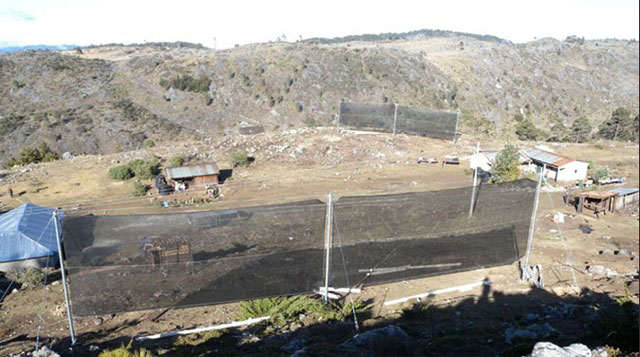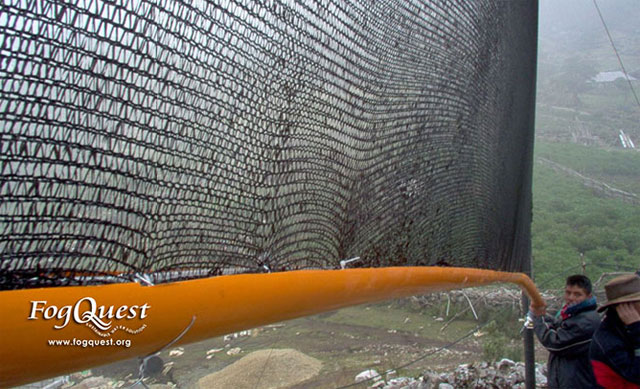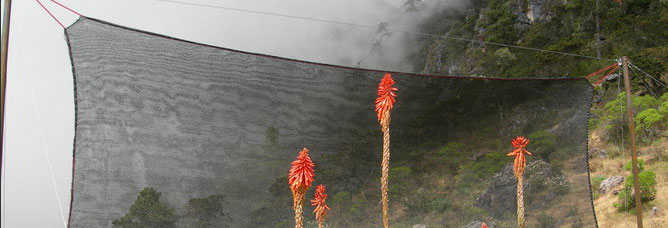Fog Harvesting
The Canadian company FogQuest engages in setting up fog harvesting fences in arid but populated areas to provide communities with drinking water.
Harvesting Method
The system consists of fences that stretch out plastic mesh, onto which the fog condensates into little drops. Along the lower edge of the mesh runs a pipe collecting the water drippings. A system of pipes guides the water to a storage tank, from which it can be accessed or delivered to communities. One harvesting fence costs about 1000 €, and with a standard size of 40 m2 can collect 300 litres of drinking water per day, thus serving several families. Ideal installation spots are in arid areas where fog appears because of being situated close to the coast line or in mountainous regions. The sites for set-up are chosen first by testing different locations with smaller fences.

Fog Collectors, Tojquia, Guatemala. March 2009. Photo: Melissa Rosato
Locations
The pilot project was installed in El Tofo, Chile, to support the village of Chungungo. The site was chosen because of the extraordinary climatic conditions at the coastline of the Atacama dessert. The harvesting system proved to be so successful that it lead to a population influx and growth of the community. Unfortunately, the facility was derailed by local politics. A new population that was not involved in the set up chose to demand a water pipeline from the administration because the existing system wasn’t able to answer the growing demand.

Fog Collectors, La Ventosa, Guatemala. 2005. Photo: Rick Taylor
Another example of application is Nepal, which is rich in drinking water, but where still half of the population does not have adequate access. The harvesting fences can provide water supply to communities on mountain ridges and slopes where access to springs may mean a walk for hours usually carried out by women and children.

Fog Collectors, La Ventosa, Guatemala. 2005. Photo: Melissa Rosato
Other successful projects have been installed in Peru, Guatemala, Venezuela, Haiti, Dominican Republic, Oman, Yemen, Israel, Namibia and Eritrea.



